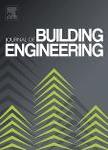版权所有:内蒙古大学图书馆 技术提供:维普资讯• 智图
内蒙古自治区呼和浩特市赛罕区大学西街235号 邮编: 010021

作者机构:China Univ Min & Technol Xuzhou 221116 Peoples R China China 22MCC Grp Corp Ltd Tangshan 063000 Peoples R China
出 版 物:《JOURNAL OF BUILDING ENGINEERING》 (J. Build. Eng.)
年 卷 期:2025年第101卷
核心收录:
基 金:National Natural Science Foundation of China [52478571, 52078478] National Fire and Rescue Administration [2023XFCX18, 2022XFCX24]
主 题:Fire spread Probability-based model BP neural network optimization Dangerous spreading path Fire scenario
摘 要:A fire scenario has a great effect on progressive collapse of structures and its selection is a key step for performance-based structural fire design. The randomness and complexity of realistic fire scenarios represented by fire spreading pose significant challenges for its quantitative selection. Existing studies based on unchanged fire ranges may be over-conservative or unsafe. This paper proposes a probability-based model to determine multi-room fire spreading scenarios in framed office buildings. A framed model with 4 x 4 spans is created in Fire Dynamics Simulator (FDS), and the effect of room dimensions, fire source locations, fire load densities and opening factors is investigated. The typical and dangerous spreading paths are quantitatively identified. A Back Propagation (BP) neural network is developed for the first time to accurately predict the horizontal spreading path and time of multi-room fires, based on optimization through whale optimization algorithm (WOA), adaptive inertia weight (I), chaotic mapping (C) and Synthetic Minority Over-sampling Technique (SMOTE). It is found that: (1) the room dimension, opening size and combustible density have a significant impact on the spreading path, and the location of fire sources greatly affects the spread speed. (2) One typical fire spread path with a probability of 14 % is identified for the corner and middle fire source, respectively. Four dangerous fire spread paths are found by considering coupled characteristics of rapid spread speed, high room temperatures and large number of fire-affected rooms. These quantified fire spreading scenarios (path, speed and time) can be directly used in structural fire design codes. (3) The optimized C-IWOA-BP neural network has a high accuracy (errors within 5 %) for predicting fire spreading paths and time, providing an efficient tool for fire emergency responses and early warning of structural collapse.